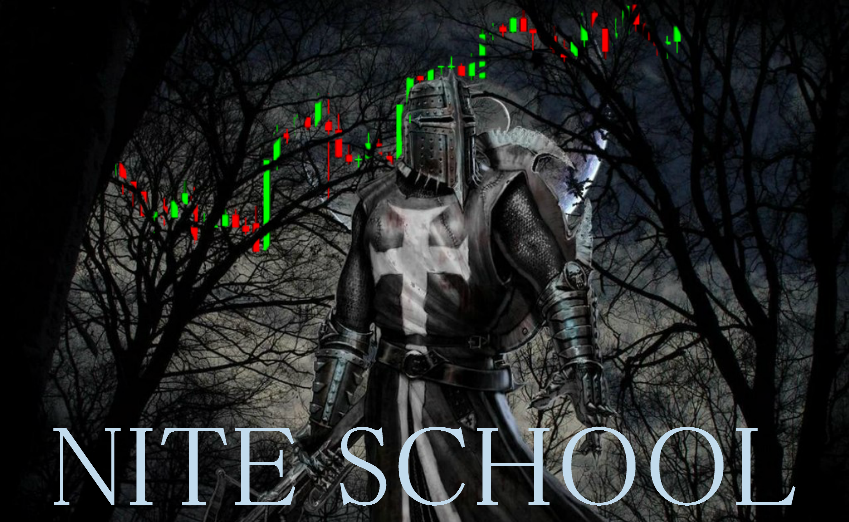Register for free to join our community of investors and share your ideas. You will also get access to streaming quotes, interactive charts, trades, portfolio, live options flow and more tools.
$ILVC BarChart Trader's Cheat Sheet
http://www.barchart.com/cheatsheet.php?sym=ILVC
Daily Candlestick Chart for MYFT
[img]stockcharts.com/c-sc/sc?s=MYFT
$MANY BarChart Trader's Cheat Sheet
http://www.barchart.com/cheatsheet.php?sym=MANY
Daily Candlestick Chart for LAWEQ
[img]stockcharts.com/c-sc/sc?s=LAWEQ
$STAU BarChart Trader's Cheat Sheet
http://www.barchart.com/cheatsheet.php?sym=STAU
Daily Candlestick Chart for DTVI
[img]stockcharts.com/c-sc/sc?s=DTVI
$PNGB BarChart Trader's Cheat Sheet
http://www.barchart.com/cheatsheet.php?sym=PNGB
Daily Candlestick Chart for MIESF
[img]stockcharts.com/c-sc/sc?s=MIESF
$HPGI BarChart Trader's Cheat Sheet
http://www.barchart.com/cheatsheet.php?sym=HPGI
Daily Candlestick Chart for EDIG
[img]stockcharts.com/c-sc/sc?s=EDIG
$SMXMF BarChart Trader's Cheat Sheet
http://www.barchart.com/cheatsheet.php?sym=SMXMF
Daily Candlestick Chart for LTCH
[img]stockcharts.com/c-sc/sc?s=LTCH
$RNDR BarChart Trader's Cheat Sheet
http://www.barchart.com/cheatsheet.php?sym=RNDR
Daily Candlestick Chart for MDXG
[img]stockcharts.com/c-sc/sc?s=MDXG
$GFSZF BarChart Trader's Cheat Sheet
http://www.barchart.com/cheatsheet.php?sym=GFSZF
$APDN BarChart Trader's Cheat Sheet
http://www.barchart.com/cheatsheet.php?sym=APDN
Daily Candlestick Chart for IAGI
[img]stockcharts.com/c-sc/sc?s=IAGI
$GTMM BarChart Trader's Cheat Sheet
http://www.barchart.com/cheatsheet.php?sym=GTMM
Daily Candlestick Chart for GRYO
[img]stockcharts.com/c-sc/sc?s=GRYO
$NSFE BarChart Trader's Cheat Sheet
http://www.barchart.com/cheatsheet.php?sym=NSFE
Daily Candlestick Chart for PRAY
[img]stockcharts.com/c-sc/sc?s=PRAY
Daily Candlestick Chart for UNDY
[img]stockcharts.com/c-sc/sc?s=UNDY
Daily Candlestick Chart for PFNO
[img]stockcharts.com/c-sc/sc?s=PFNO
Daily Candlestick Chart for ERBB
[img]stockcharts.com/c-sc/sc?s=ERBB
Support and Resistance
Support and resistance represent key junctures where the forces of supply and demand meet. In the financial markets, prices are driven by excessive supply (down) and demand (up). Supply is synonymous with bearish, bears and selling. Demand is synonymous with bullish, bulls and buying. These terms are used interchangeably throughout this and other articles. As demand increases, prices advance and as supply increases, prices decline. When supply and demand are equal, prices move sideways as bulls and bears slug it out for control.

$GTRL BarChart Trader's Cheat Sheet
http://www.barchart.com/cheatsheet.php?sym=GTRL
Internal Trend Lines
Sometimes there appears to be the possibility for drawing a trend line, but the exact points do not match up cleanly. The highs or lows might be out of whack, the angle might be too steep or the points might be too close together. If one or two points could be ignored, then a fitted trend line could be formed. With the volatility present in the market, prices can over-react, and produce spikes that distort the highs and lows. One method for dealing with over-reactions is to draw internal trend lines. Even though an internal trend line ignores price spikes, the ignoring should be within reason.

The long-term trend line for the S
Daily Candlestick Chart for GTRL
[img]stockcharts.com/c-sc/sc?s=GTRL
$LNXGF BarChart Trader's Cheat Sheet
http://www.barchart.com/cheatsheet.php?sym=LNXGF
Daily Candlestick Chart for MGLT
[img]stockcharts.com/c-sc/sc?s=MGLT
$NHVCF BarChart Trader's Cheat Sheet
http://www.barchart.com/cheatsheet.php?sym=NHVCF
Cultural Factors Causing Irrational Exuberance
The news media and new era thinking are among the cultural factors cited by Shiller. Yes, the media seems to keep popping up in the book. Maybe that is why technical analysts only look at price charts!
The speculative bubble was clearly aided and abetted by the news media. Newspapers, television, radio and Internet media compete for public attention. Sensational stories with sound bites are more likely to attract attention than drab analysis with numbers and facts. Despite an inattention to detail, the news media was always there with specific reasons for a stock market move. The media always found the perfect excuse or news event to justify the move - after the fact. It is kind of like a solution in search of a problem.

Robert Shiller notes that news of price changes is influential on investor behavior. In his survey after the crash on October 19th 1987, Shiller listed all the recent news events that seemed relevant and asked respondents to rate the stories. News of the October 14th price decline was also included in this list. At the time, this was the single largest one-day point decline in the Dow Industrials. Surprisingly, the stories relating to the past price declines were deemed the most significant news events. As Shiller states:
Thus it appears that the stock market crash had substantially to do with a psychological feedback loop among the general investing public from price declines to selling and thus to further price declines, along the lines of a negative bubble. The crash apparently had nothing particularly to do with any news story other than that of the crash itself, but rather with theories about other investors' reasons for selling and about their psychology.
New era economic thinking was also cited by Shiller as a cultural factor that contributed to the stock market bubble. New era thinking is not new. Stock market advances in the late 1800s, 1920's and 1960's were also facilitated by new era thinking. At the 1901 peak, new era thinking centered around railroads, big industrial trusts and the age of optimism. The roaring 20's were marked by the electrical age for big cities and the widening use of autos. The 1960's were punctuated by a baby boom, the proliferation of television and low inflation. And finally, the 1990s saw the Internet boom, low inflation, the new economy and the alleged end of the business cycle.

Daily Candlestick Chart for FTEG
[img]stockcharts.com/c-sc/sc?s=FTEG
$AWKS BarChart Trader's Cheat Sheet
http://www.barchart.com/cheatsheet.php?sym=AWKS
Daily Candlestick Chart for STAU
[img]stockcharts.com/c-sc/sc?s=STAU
$ECRY BarChart Trader's Cheat Sheet
http://www.barchart.com/cheatsheet.php?sym=ECRY
Fat Tails and Trends
Historic stock returns are not normally distributed. What does this mean? If one were to measure the height of 1000 people and plot the distribution, this distribution would form the classic bell curve. The most recurring height (value) would be in the middle and the remaining heights would be equally distributed on either side. Furthermore, 68.5% of all values would fall within ±1 standard deviation of the mean, 95.4% would fall within ±2 standard deviations and 99.7% would fall within ±3 standard deviations. The solid black line shows a typical bell curve with a normal distribution.

Statisticians have found that a distribution of stock returns forms a curve with "fat tails". For example, this could be a distribution of the 1000 weekly returns for a basket of stocks. In a normal distribution, 99.7% of all these returns would be within ±3 standard deviations of the mean. This, however, is not the case for stock returns. Instead, the distribution has fat tails (black dotted lines). This means a relatively high number of returns fall outside the normal distribution. Some are lower and some are higher. These abnormal returns provide evidence of extended moves, outsized moves or trends. Note that the image above is just a hypothetical example to illustrate a point.

$HAZH BarChart Trader's Cheat Sheet
http://www.barchart.com/cheatsheet.php?sym=HAZH
Daily Candlestick Chart for PEFDF
[img]stockcharts.com/c-sc/sc?s=PEFDF
Support Equals Resistance
Another principle of technical analysis stipulates that support can turn into resistance and vice versa. Once the price breaks below a support level, the broken support level can turn into resistance. The break of support signals that the forces of supply have overcome the forces of demand. Therefore, if the price returns to this level, there is likely to be an increase in supply, and hence resistance.
The other turn of the coin is resistance turning into support. As the price advances above resistance, it signals changes in supply and demand. The breakout above resistance proves that the forces of demand have overwhelmed the forces of supply. If the price returns to this level, there is likely to be an increase in demand and support will be found.

In this example of the NASDAQ 100 Index ($NDX), the stock broke resistance at 935 in May-97 and traded just above this resistance level for over a month. The ability to remain above resistance established 935 as a new support level. The stock subsequently rose to 1150, but then fell back to test support at 935. After the second test of support at 935, this level is well established.

From the PeopleSoft (PSFT) example, we can see that support can turn into resistance and then back into support. PeopleSoft found support at 18 from Oct-98 to Jan-99 (green oval), but broke below support in Mar-99 as the bears overpowered the bulls. When the stock rebounded (red oval), there was still overhead supply at 18 and resistance was met from Jun-99 to Oct-99.
Where does this overhead supply come from? Demand was obviously increasing around 18 from Oct-98 to Mar-99 (green oval). Therefore, there were a lot of bullish buyers of the stock around 18. When the price declined below 18 and fell to around 14, many of these (now unhappy) bulls were probably still holding the stock. This left a supply overhang (commonly known as resistance) around 18. When the stock rebounded to 18, many of the green-oval-bulls probably took the opportunity to sell and "escape" with little to no loss. When this supply was exhausted, the demand was able to overpower supply and advance above resistance at 18.

$ACDU BarChart Trader's Cheat Sheet
http://www.barchart.com/cheatsheet.php?sym=ACDU
Daily Candlestick Chart for GMCP
[img]stockcharts.com/c-sc/sc?s=GMCP
$PSYC BarChart Trader's Cheat Sheet
http://www.barchart.com/cheatsheet.php?sym=PSYC
Daily Candlestick Chart for SNTL
[img]stockcharts.com/c-sc/sc?s=SNTL
Daily Candlestick Chart for NPFT
[img]stockcharts.com/c-sc/sc?s=NPFT
|
Followers
|
3281
|
Posters
|
|
|
Posts (Today)
|
0
|
Posts (Total)
|
2804248
|
|
Created
|
08/22/10
|
Type
|
Free
|
| Moderator Nilbud | |||
| Assistants mick ManicTrader PhotoChick Kirimi $Pistol Pete$ | |||
   Investor Hub Alerts: Sign up for 'STOCKGOODIES PLAYS OF THE WEEK ' E-Mail List Investor Hub Alerts: Sign up for 'STOCKGOODIES PLAYS OF THE WEEK ' E-Mail ListUPDATE; 5-1-22 courtesy of charting /\ wit tweezer top calls /\ Tony @Montana_Trades Really good study sheet on Candlestick Patterns [-chart]pbs.twimg.com/media/FRn8188XMAAdZvk?format=jpg&name=small[/chart]  

02-07-2021
|
|
Posts Today
|
0
|
|
Posts (Total)
|
2804248
|
|
Posters
|
|
|
Moderator
|
|
|
Assistants
|
| Volume | |
| Day Range: | |
| Bid Price | |
| Ask Price | |
| Last Trade Time: |
